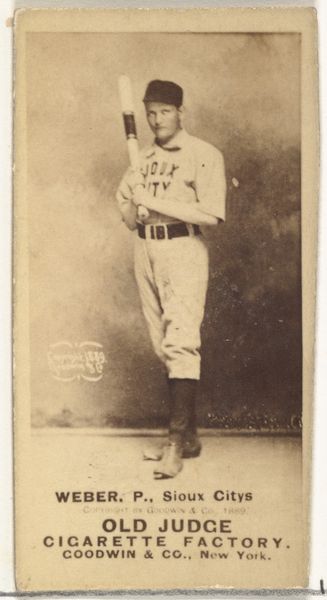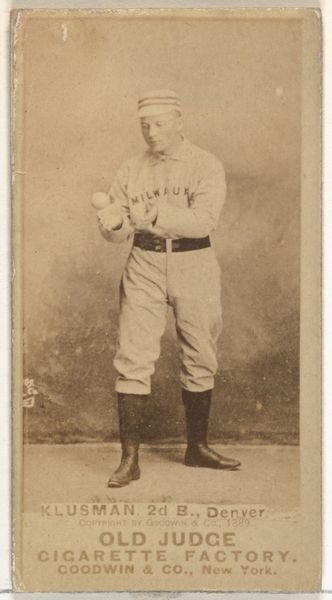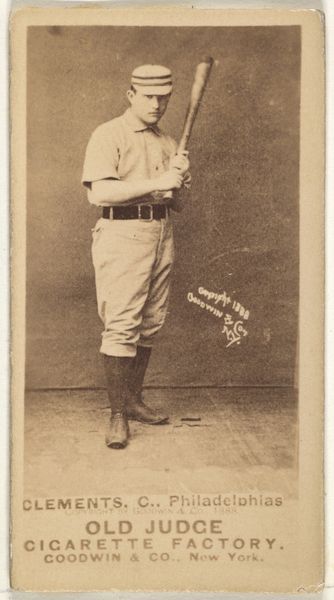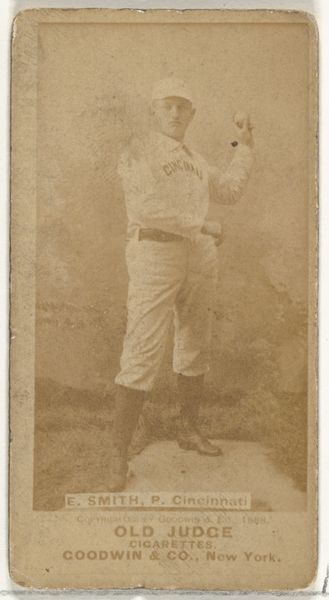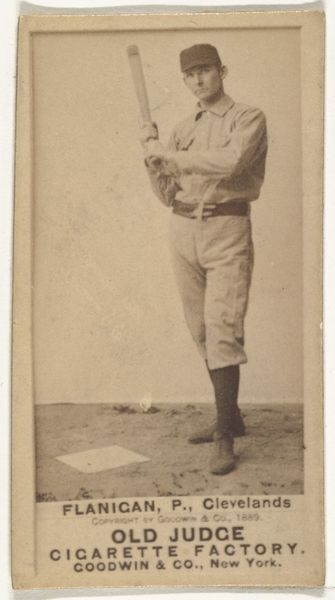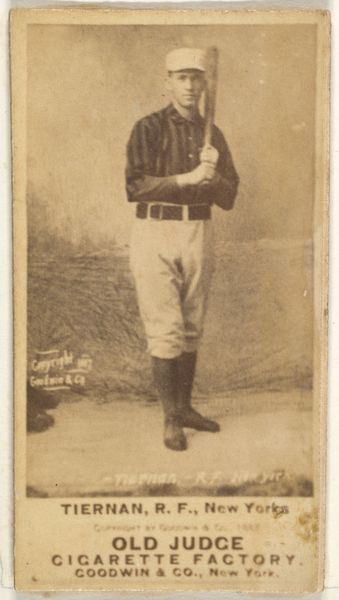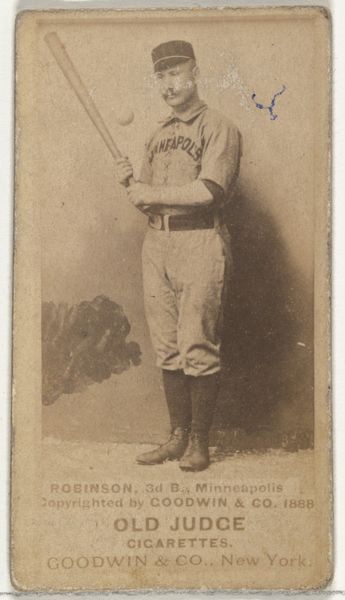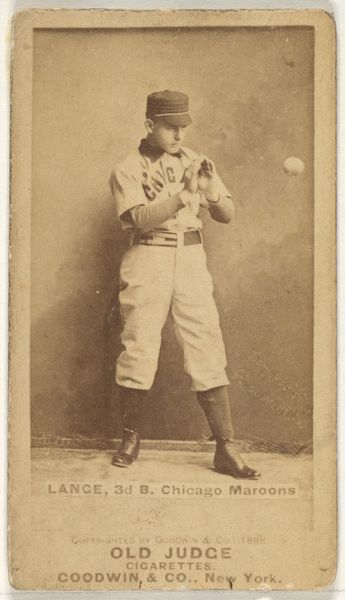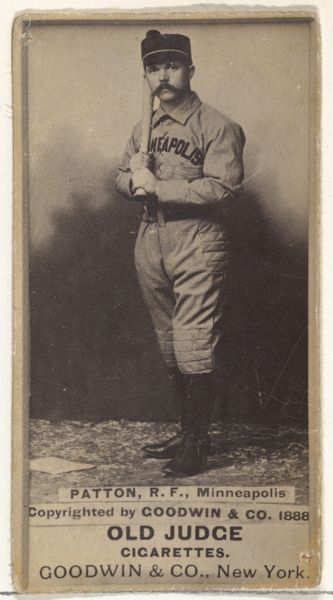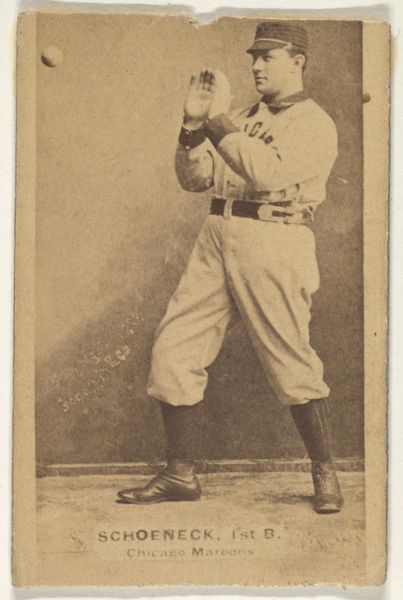
Thomas McCallum, Center Field, Minneapolis, from the Old Judge series (N172) for Old Judge Cigarettes 1888
0:00
0:00
drawing, print, photography
#
portrait
#
drawing
#
aged paper
#
toned paper
# print
#
impressionism
#
old engraving style
#
baseball
#
photography
#
19th century
#
men
#
athlete
Dimensions: sheet: 2 11/16 x 1 3/8 in. (6.9 x 3.5 cm)
Copyright: Public Domain
Curator: This small card captures Thomas McCallum, center fielder for Minneapolis in 1888. It's part of the "Old Judge" series, printed as promotional items for Old Judge Cigarettes. The studio that made this card was called Goodwin & Company. Editor: My first thought is how the sepia tone gives it such a weighty historical presence. The card format almost creates a little shrine, an icon to early athletic prowess. Curator: The composition is classic—a full-length portrait with the subject centrally placed. We have to remember, this was innovative then, showcasing athletes outside formal studio settings. Look at the sharpness, especially on the baseball bat he holds. Editor: But it is an entirely artificial moment isn’t it? Even though he is holding the tools of his trade. Let’s consider who made these images and to what end. Placing his image on a cigarette card does a great deal to elevate McCallum’s public profile, sure. But what broader societal shifts did this moment capitalize upon? The growing appetite for spectator sports; the birth of a star system built around athletes; the increasing intersection between consumer culture, advertising and leisure… It makes you wonder about how the exploitation of celebrity endorsements have always existed. Curator: Certainly. Though, in isolating McCallum, we lose sight of formal nuances. The careful gradations in tone, the play of light on his uniform – observe how it defines the folds of the fabric, emphasizing volume and form. These cards are not merely documentary; they possess their own aesthetic quality, speaking to the era's artistic conventions. Editor: I'm drawn to that uniform he is wearing; and those slightly worn elements hint at labor and the material realities of a profession we so often romanticize. I wonder about the degree to which such images could reinforce the period's concepts of idealized masculinity and athletic success and whose success stories go untold? Whose image, printed on the "Old Judge" cards were forgotten in the mists of time. Curator: That's a perspective that provides insight, of course. Ultimately, for me, these images present a complex interplay of form and function—a product of artistic intent meeting the demands of commerce. Editor: Absolutely. And understanding that interplay forces us to question not only the values promoted but the power dynamics at play in constructing those values, then and now.
Comments
No comments
Be the first to comment and join the conversation on the ultimate creative platform.
